April 9th, 2025
What lives in the shallows of the bc coast?
Written by Josh Silberg
A myriad of spineless wonders live everywhere you look in British Columbia’s intertidal ecosystem. At low tide, take a peek into a tide pool and count how many different species you can spot. The rocks are crusted with life.
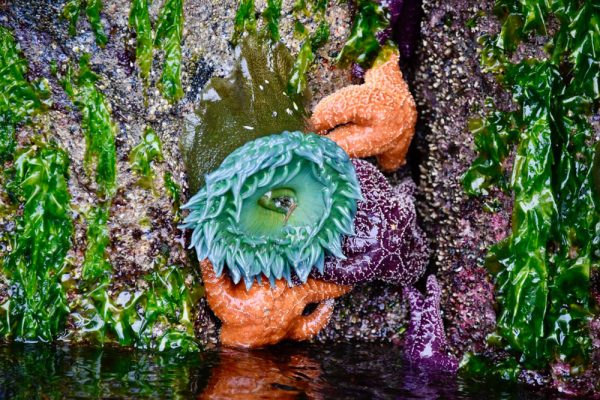
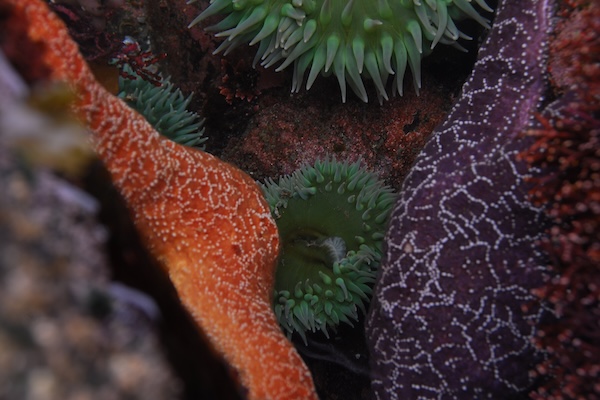
HIGHEST DIVERSITY OF SEA STARS EXIST IN BC
British Columbia’s intertidal zone has the highest diversity of sea stars in the world. Sadly in the past few years, a wasting disease has decimated many sea star species. Scientists believe that warm water linked to climate change has made sea stars more vulnerable to the disease. Ochre stars were one of the hardest hit, but thankfully, we’re now seeing signs of recovery. Sea stars range in colour from purple to orange. Despite many attempts by scientists, it remains a mystery why ochre stars range in colour.
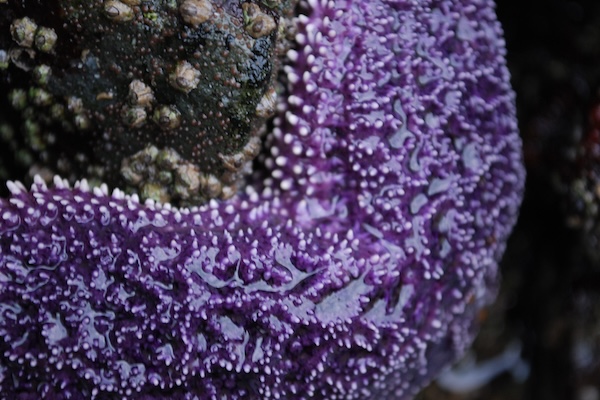 Ochre Sea Star
Ochre Sea Star
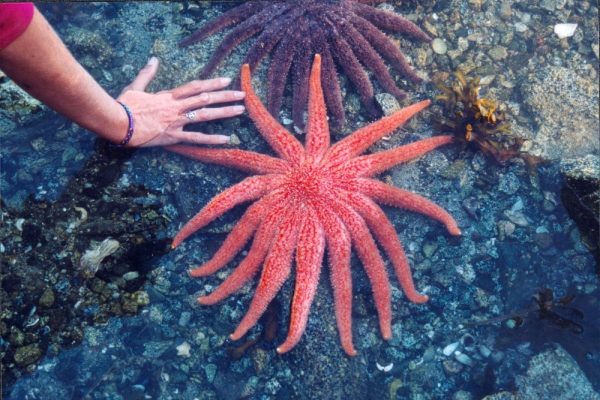 Sunflower Sea Star
Sunflower Sea Star
SELF-CLONING SEA ANEMONES
It’s common to see aggregating anemones in tide pools all over the coast. When potential food touches its tentacles, an anemone shoots out stinging cells to subdue their prey. Human skin is too thick to be affected, although be careful if you have cuts. Interestingly, aggregating anemones can split and clone themselves. That’s why you often find clumps of them together. The much larger giant green anemone is also commonly found in tide pools.
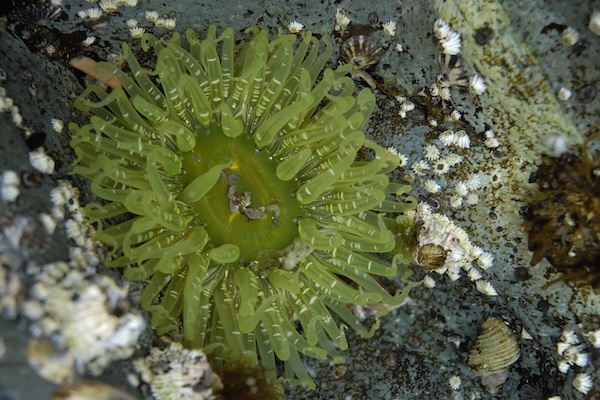
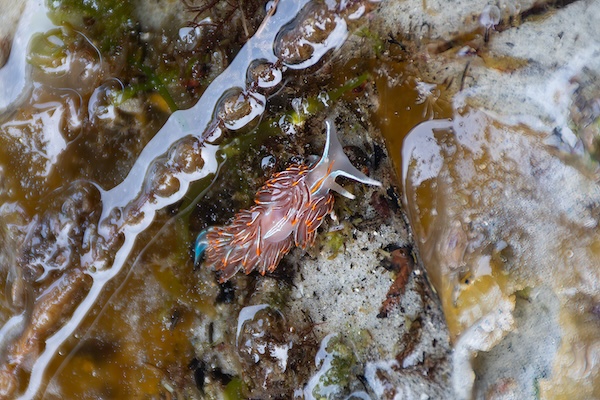
COLOURFUL SEA SLUGS
Nudibranchs, or sea slugs, are always a crowd pleaser. Many have fun names like sea lemons or opalescent nudibranchs. They range in colour from bright yellow to fiery orange to brilliant red, which act as a warning to would-be predators that these slugs don’t taste very pleasant. For further protection, some species can even repurpose the stinging cells from their food and put them to use for their own defences.
RED CALCAREOUS TUBE WORMS
Another common tide pool resident are red calcareous tube worms. These worms cement their tubes to hard surfaces. When disturbed by a splashing hand or even a shadow, the worms retreat into their tube faster than you can say tube worm. The red colour on their frilly cirri comes from a pigment called astaxanthin—the same pigment that gives lobsters, shrimp, and salmon their reddish colour.
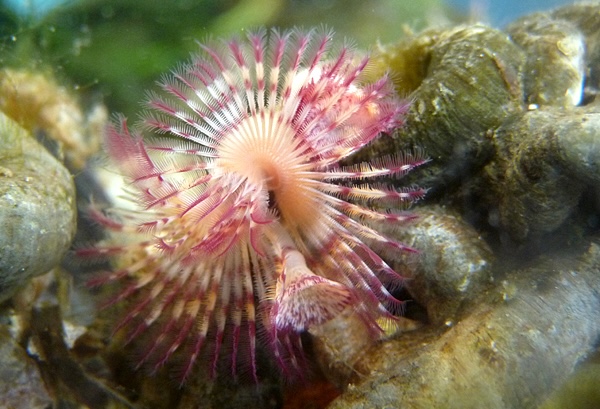
So next time you check the tides for your kayak adventure, make sure to carve out some time at low tide to poke around British Columbia’s intertidal zone. You never know what you’ll find!



